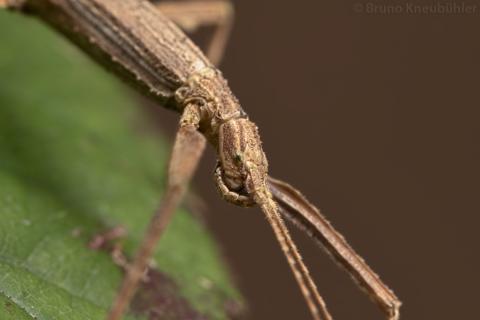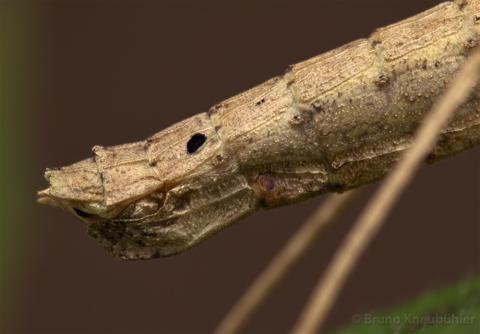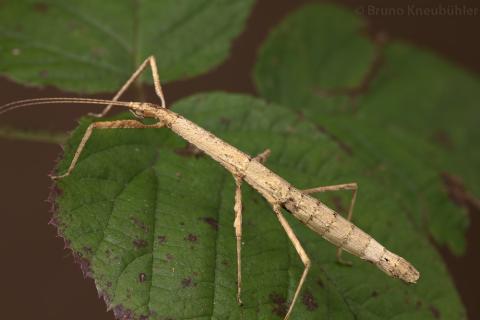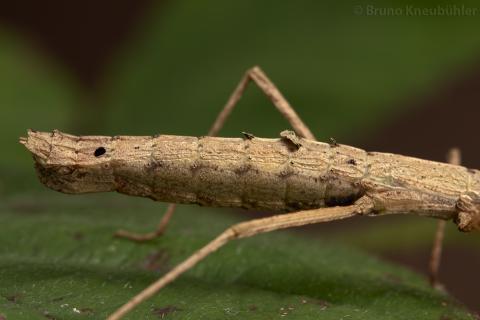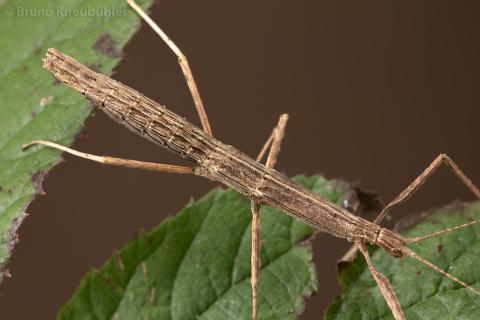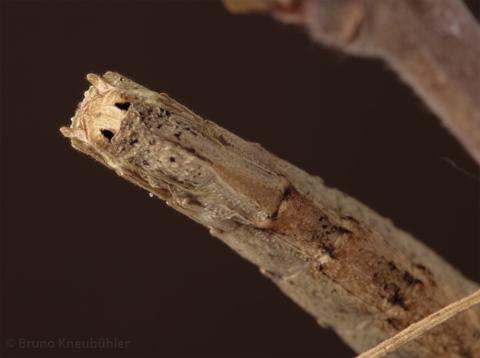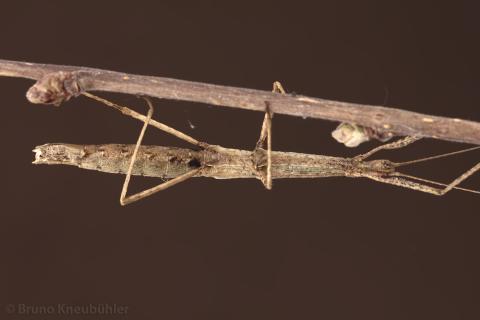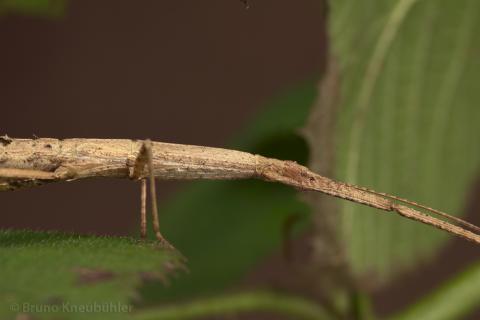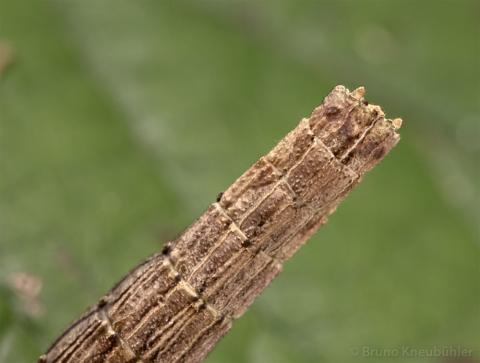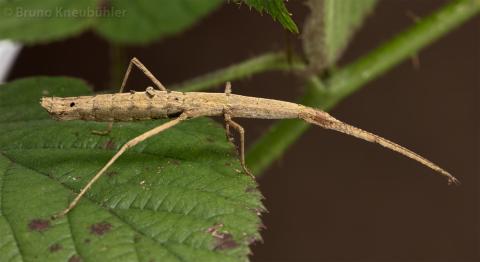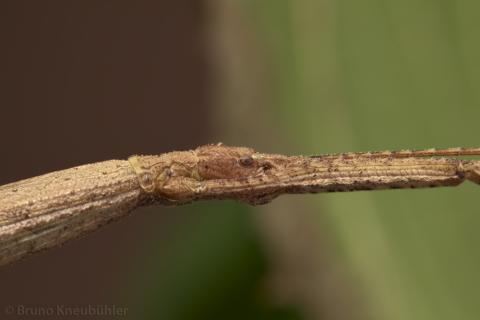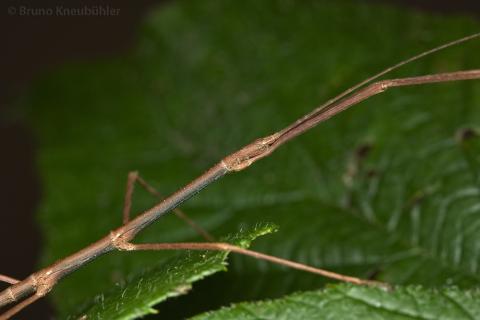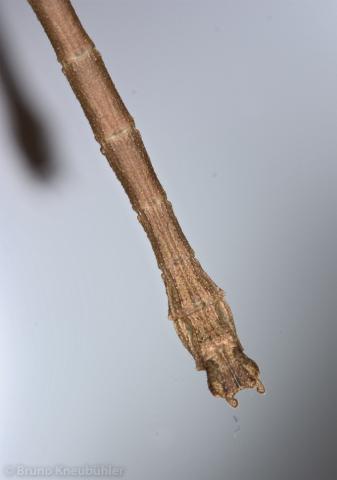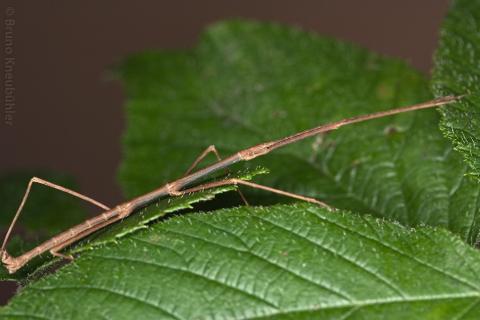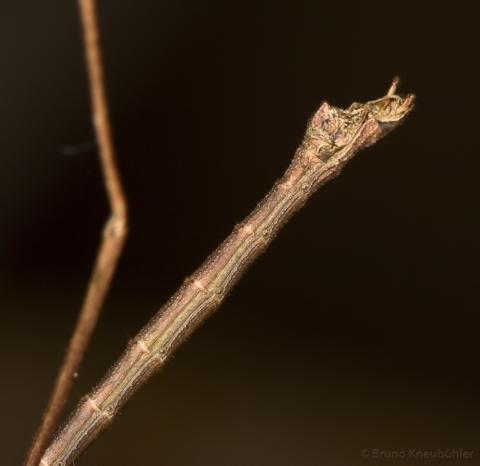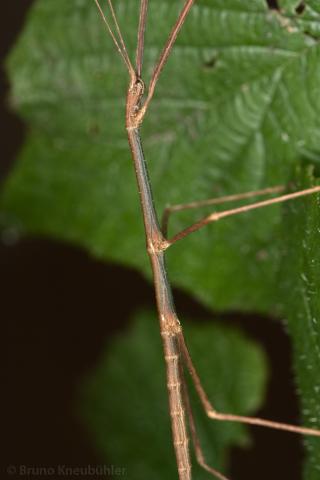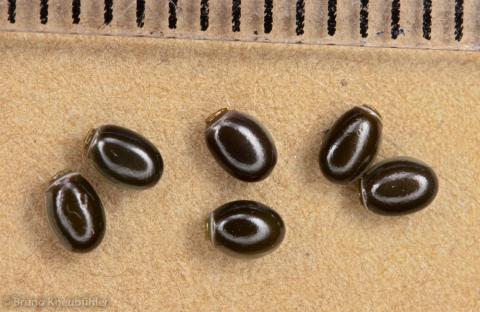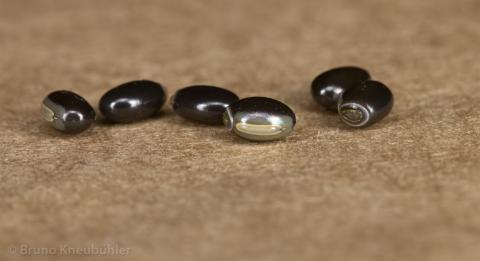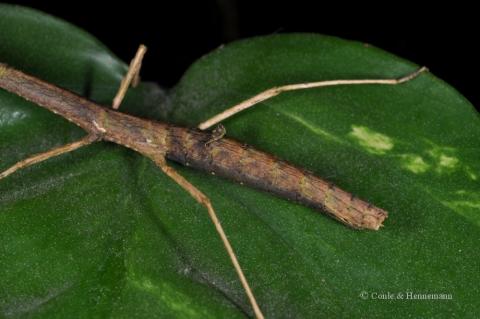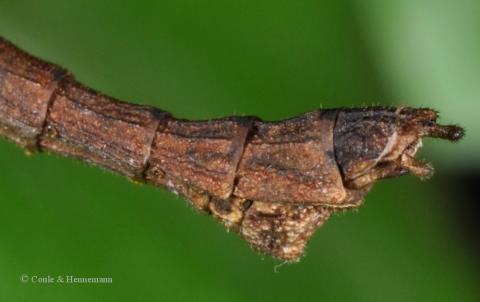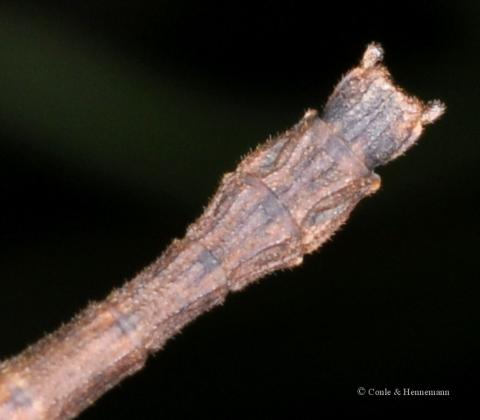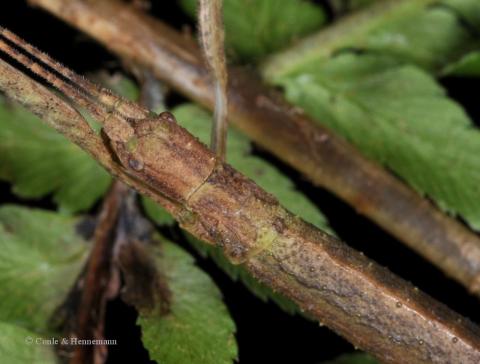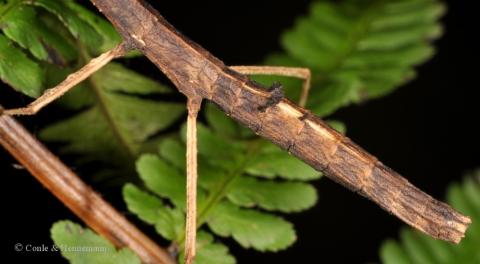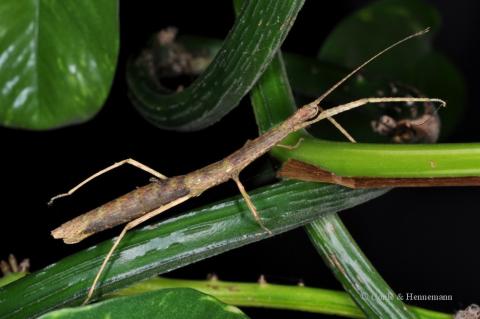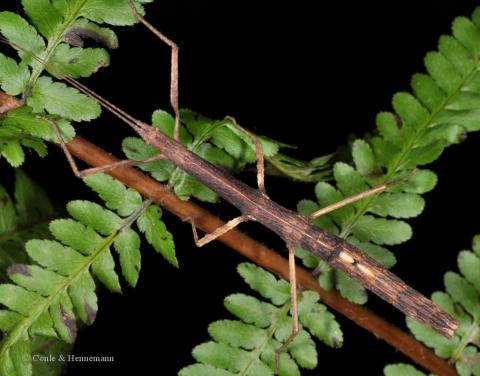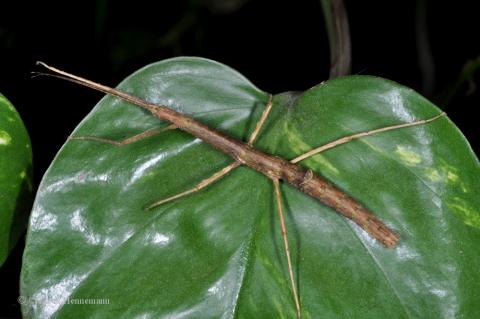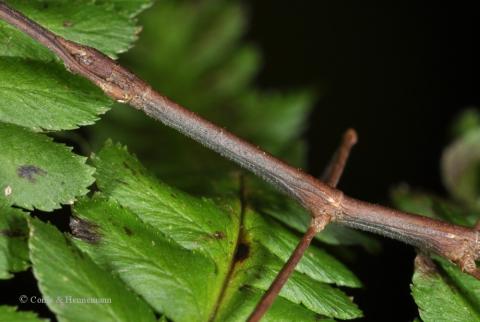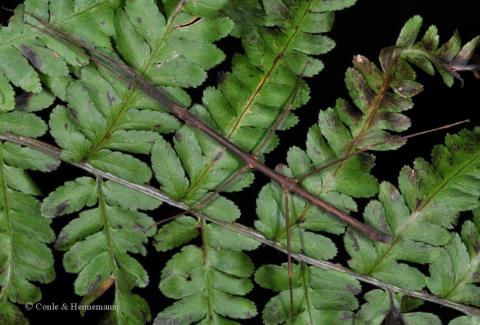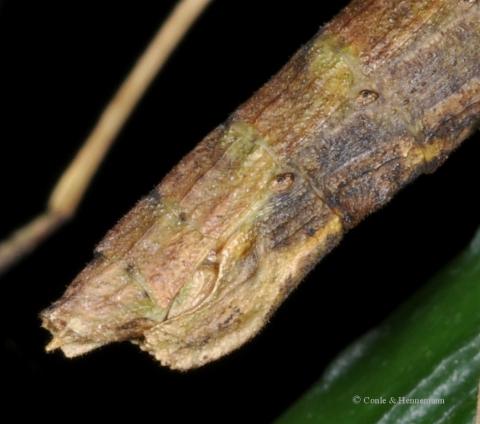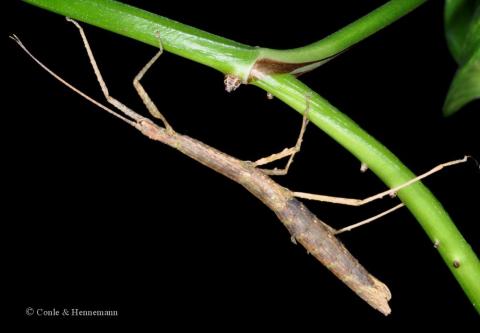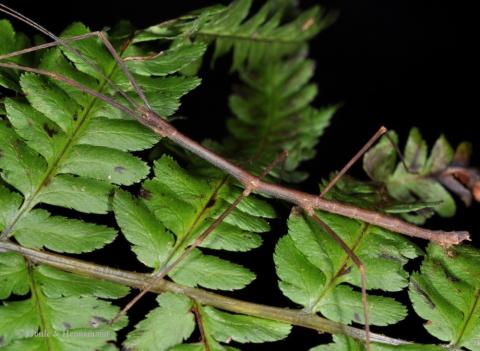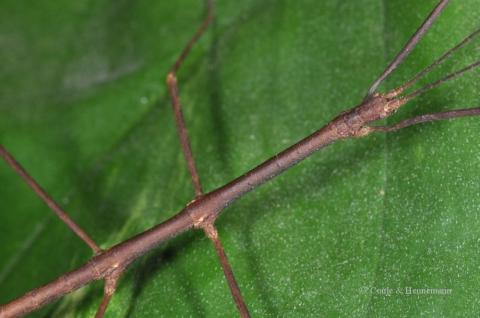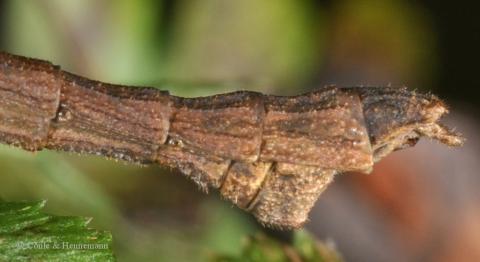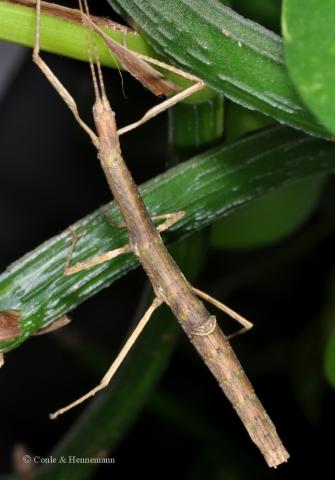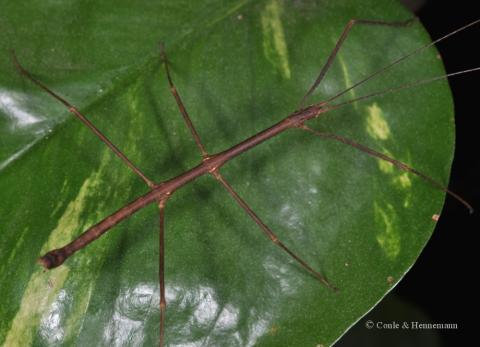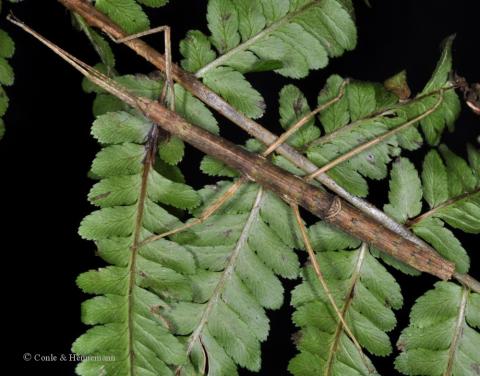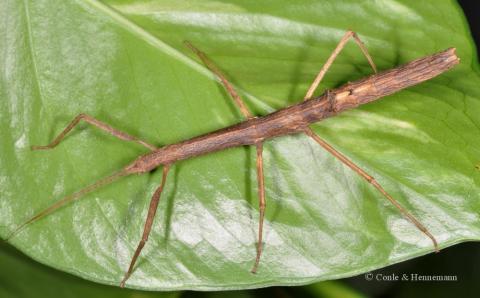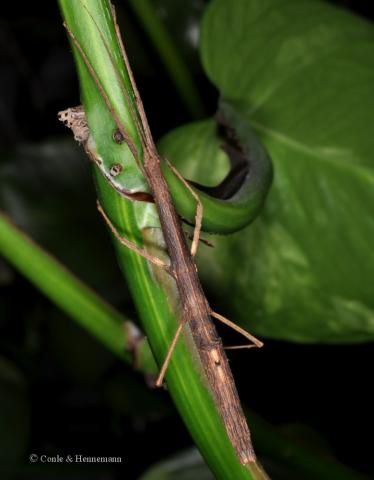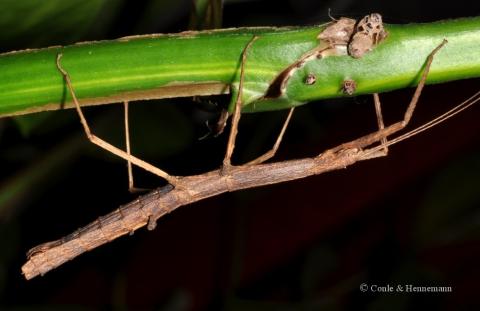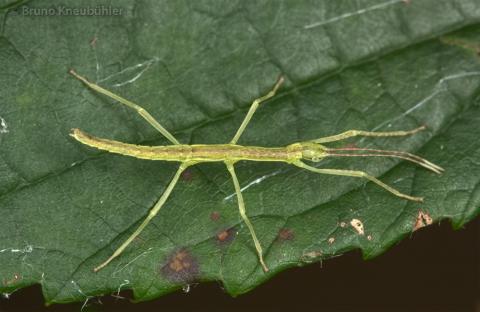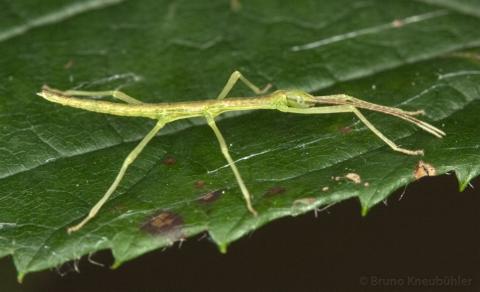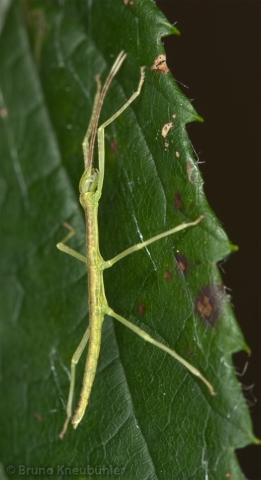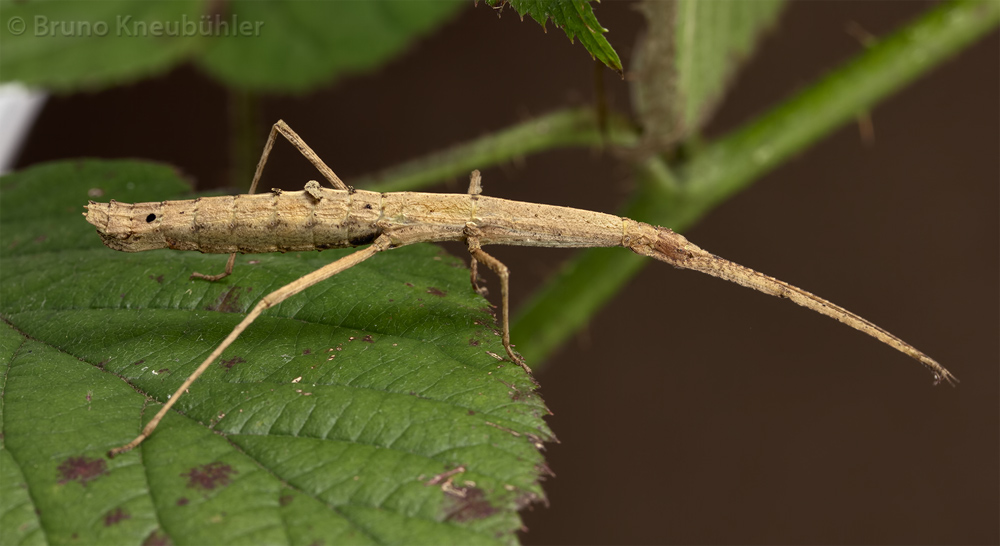
Genus
Species
Stock
CLP
496
Culture status
Probably lost
Foodplants
Bramble (Rubus spp.)
Breeding notes
(by Bruno Kneubühler)
General Notes
- 2010 - this species has been importet and cultured for the first time by Bruno Kneubuehler
- 2010 - the taxonomic position of this species is subject to current research by Oskar Conle and Frank Hennemann
- 2012 - this is the same species as PSG 51 (Frank Hennemann, pers. comm.)
_________________
Origin
- Tingo Maria, Peru
_________________
Females
- stocky insects
- about 3.5 - 4 cm long
- variable colouration amongst females
- mainly combinations of different brown tones, sometimes with black spots
- some females do have a somewhat fan-shaped protuberance on their abdomen (dorsal, in the are of the 3rd or 4th abdominal segment)
- antennae are slightly longer than the forelegs
- no wings
_________________
Males
- slim creatures
- about 3.5 - 4 cm long
- males are uniformly coloured
- dark brown body
- underside of meso- and metathorax is bluish-grey
- antennae a bit longer than the forelegs
- no wings
_________________
Nymphs (L1)
- green
- about 1 cm long
- light-coloured antennae tips
- antennae about the length of the forelegs
_________________
Eggs
- about 2 x 1 mm
- roundish
- dark brown, almost black
- whitish microphylar plate
- light grey area around the microphylar plate
- very glossy (this is causing the light reflections on the eggs in the photos)
_________________
Food Plants
- nymphs and adults do accept bramble (Rubus sp.) very well
_________________
Behaviour
- they do not show a particular active defensive behaviour at any stage of their development
- generally they just freeze and just depend upon their camouflage
- some specimens try to crawl away from danger, just to freeze again after a short distance
- matings can be observed frequently
- males do not stay with the same female for a longer time period
_________________
Breeding Notes
- a very easy to breed species
- incubation with the HH-method (on slightly damp sand) yields a good hatching ratio
- some moss spread over the eggs reduces mould growth and strongly facilitates successful hatching
- incubation time at room temperatures (20 - 23°C) is about 2.5 - 3 months
- hatching ratio was very high (75+ %)
- keep the nymphs in a cage with good ventilation
- take care that the humidity does not drop too low
- a constantly wet paper towel on the floor of the cage helps raising humidity
- nymphs and adults can be kept in a Faunabox (or similar cage)
- move nymphs to a bigger cage as they grow bigger
- I have never sprayed nymphs or adults with water
- males will be adult after about 3 months (at 20 - 23°C), females after 4 months
- females start to lay eggs after about 2 - 3 weeks
- eggs are just dropped to the ground
- about 10 - 12 eggs per female and week
